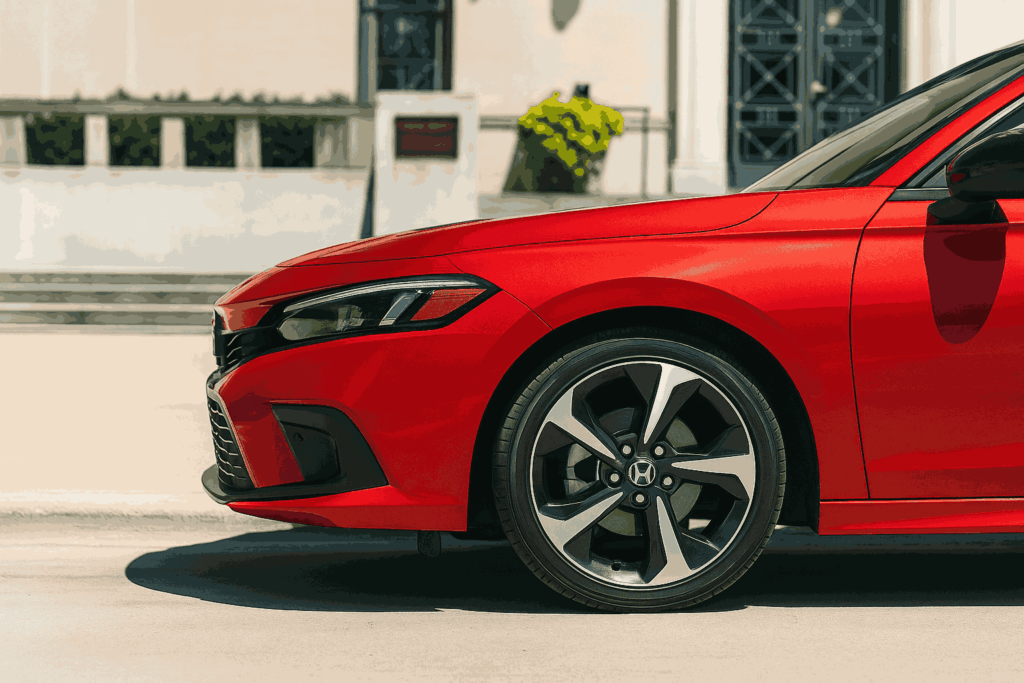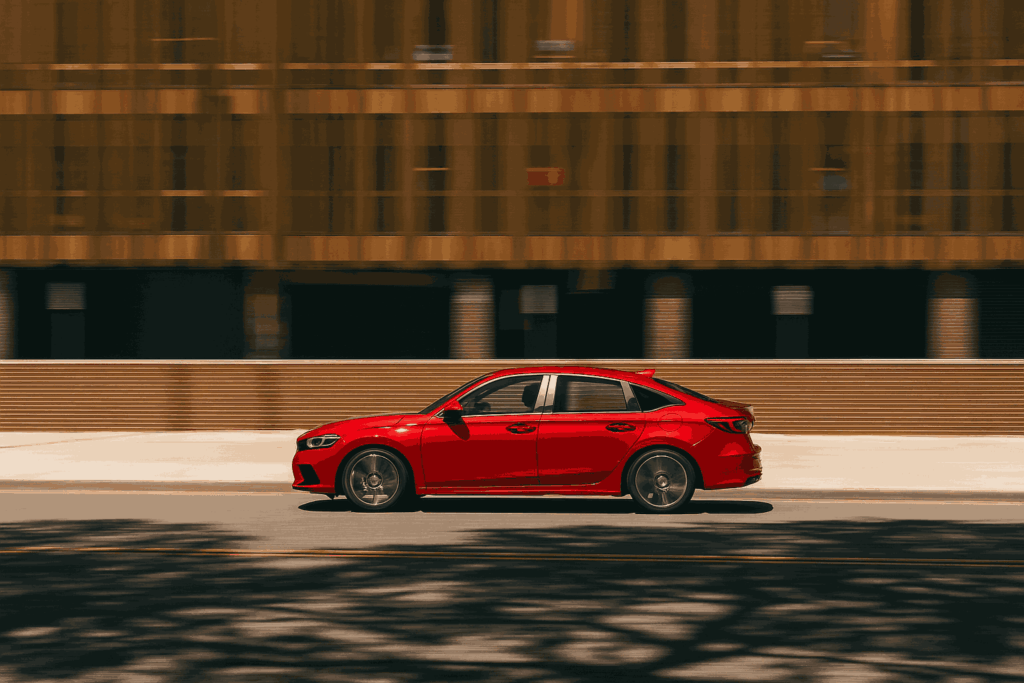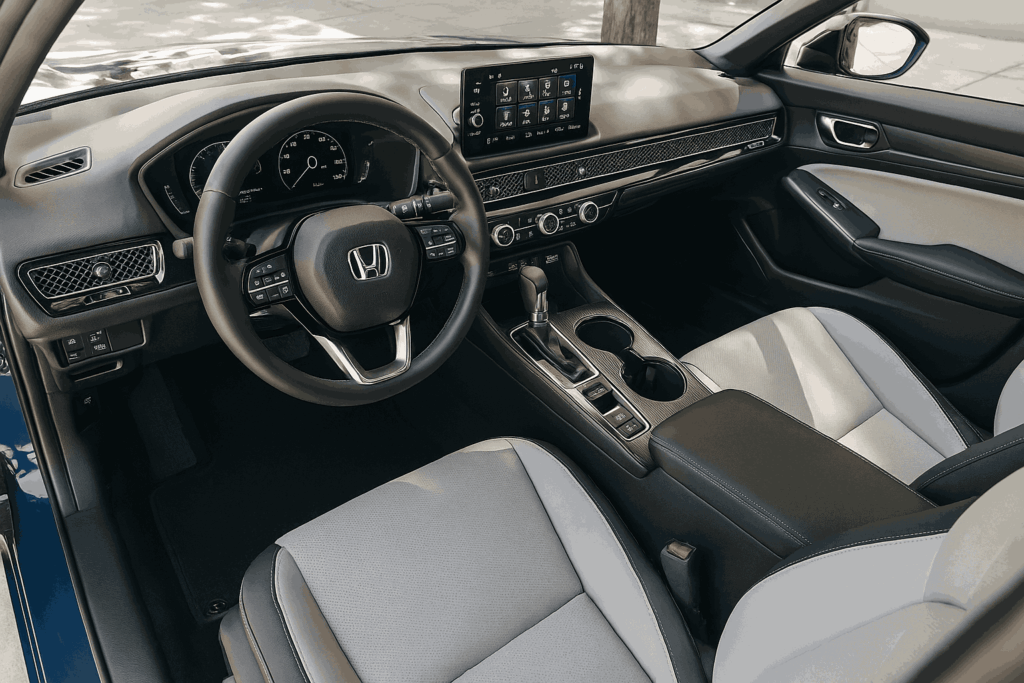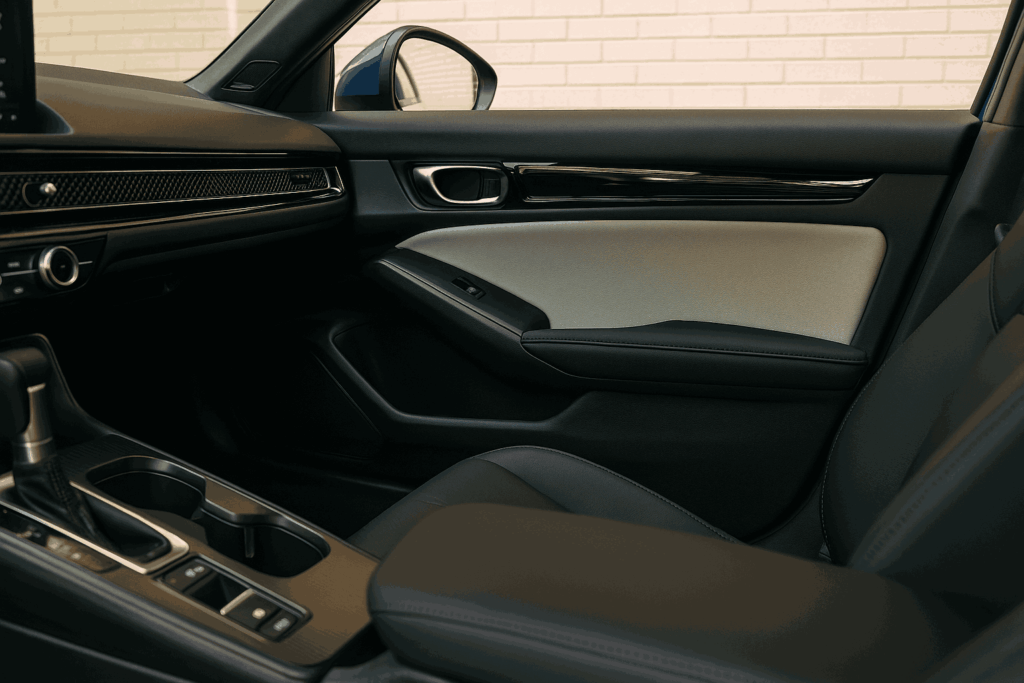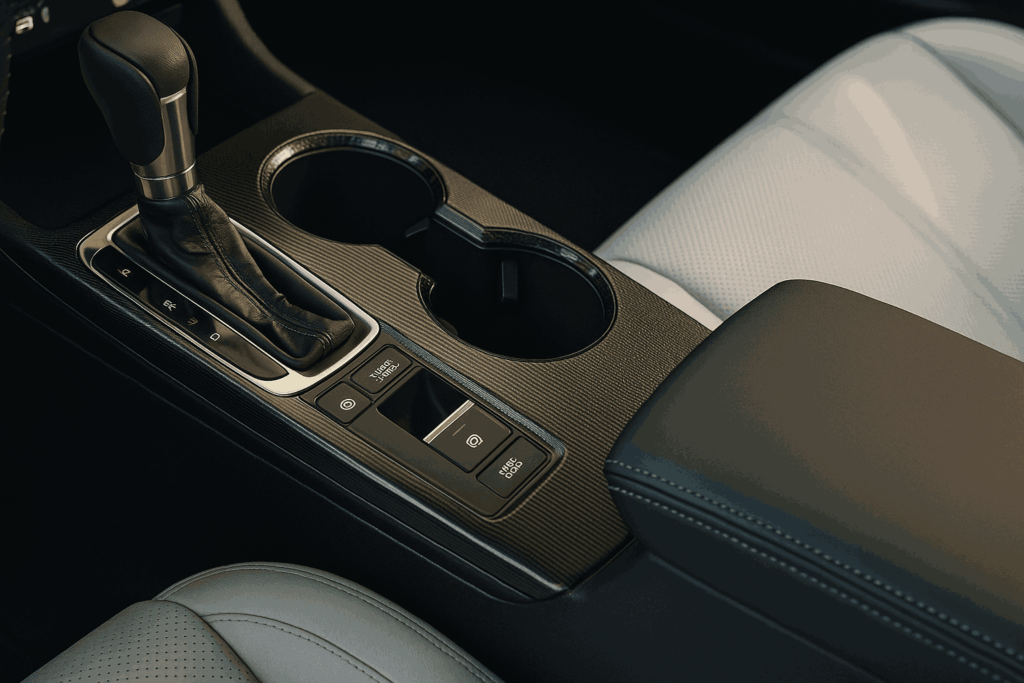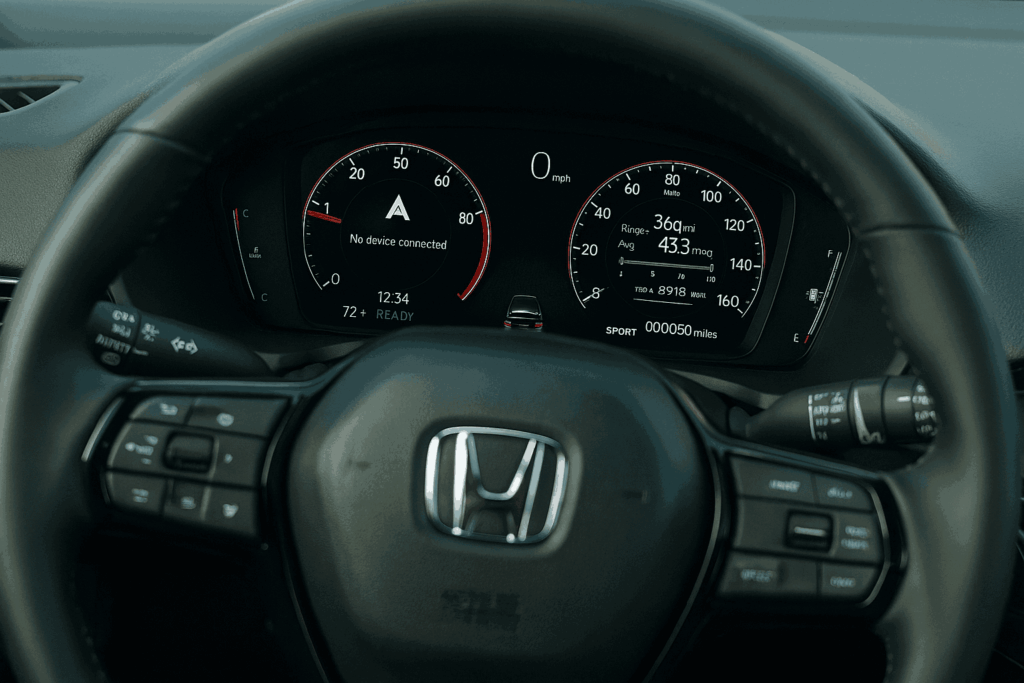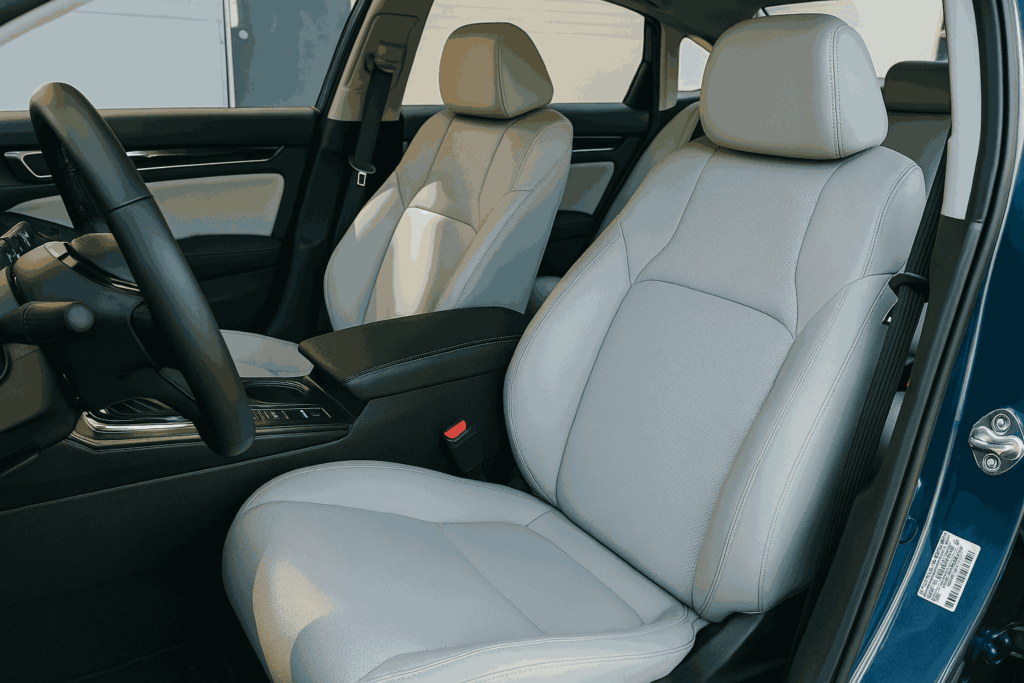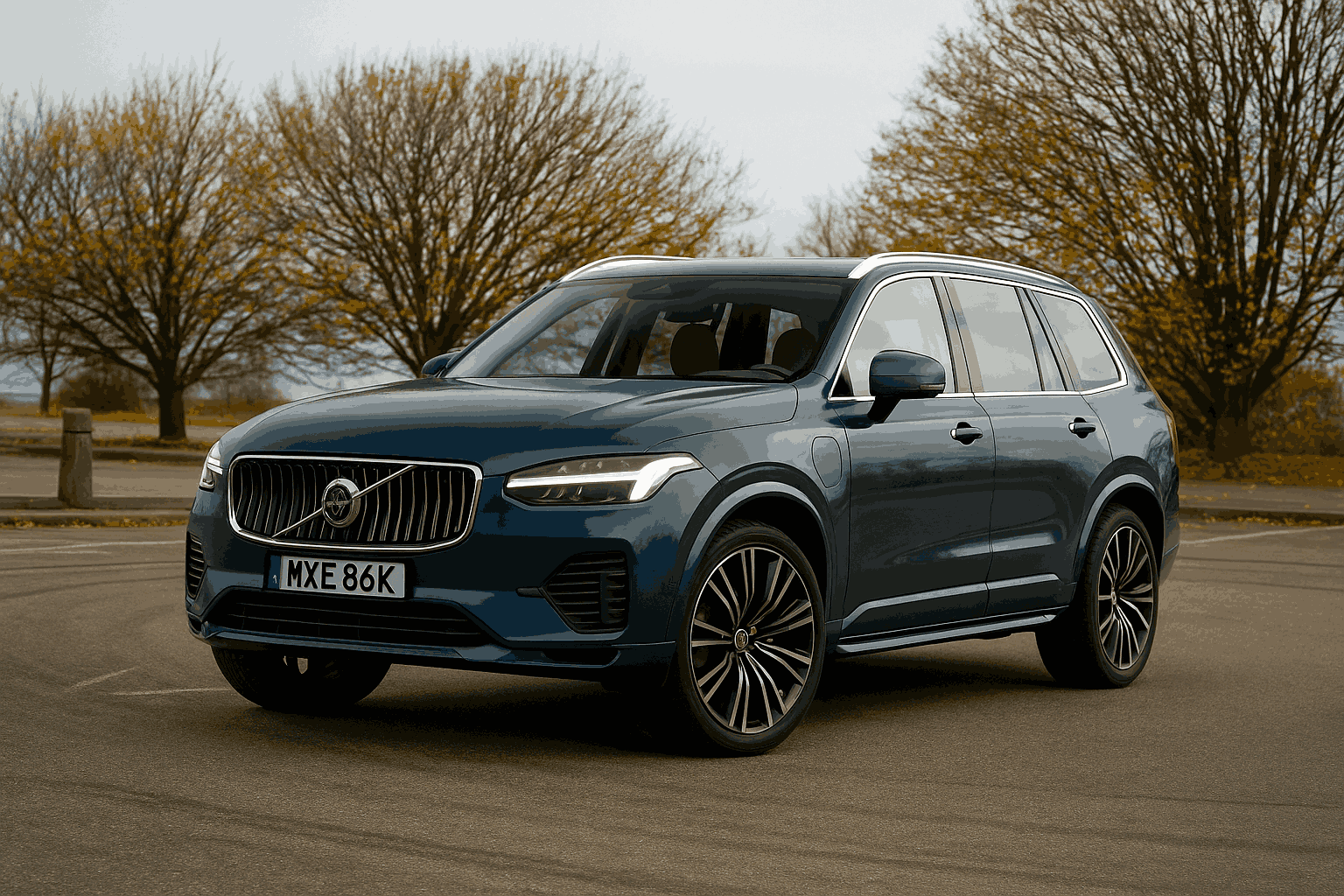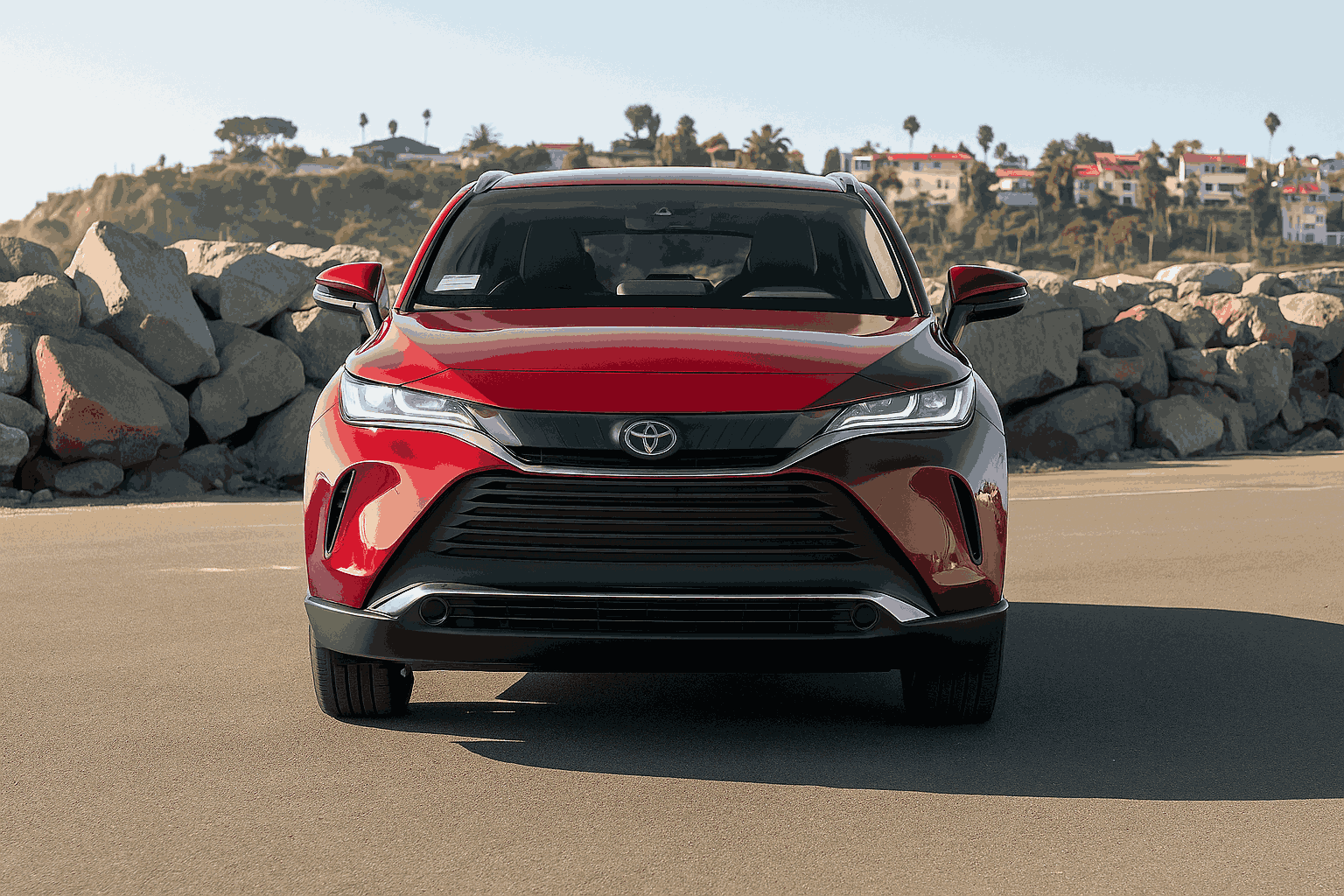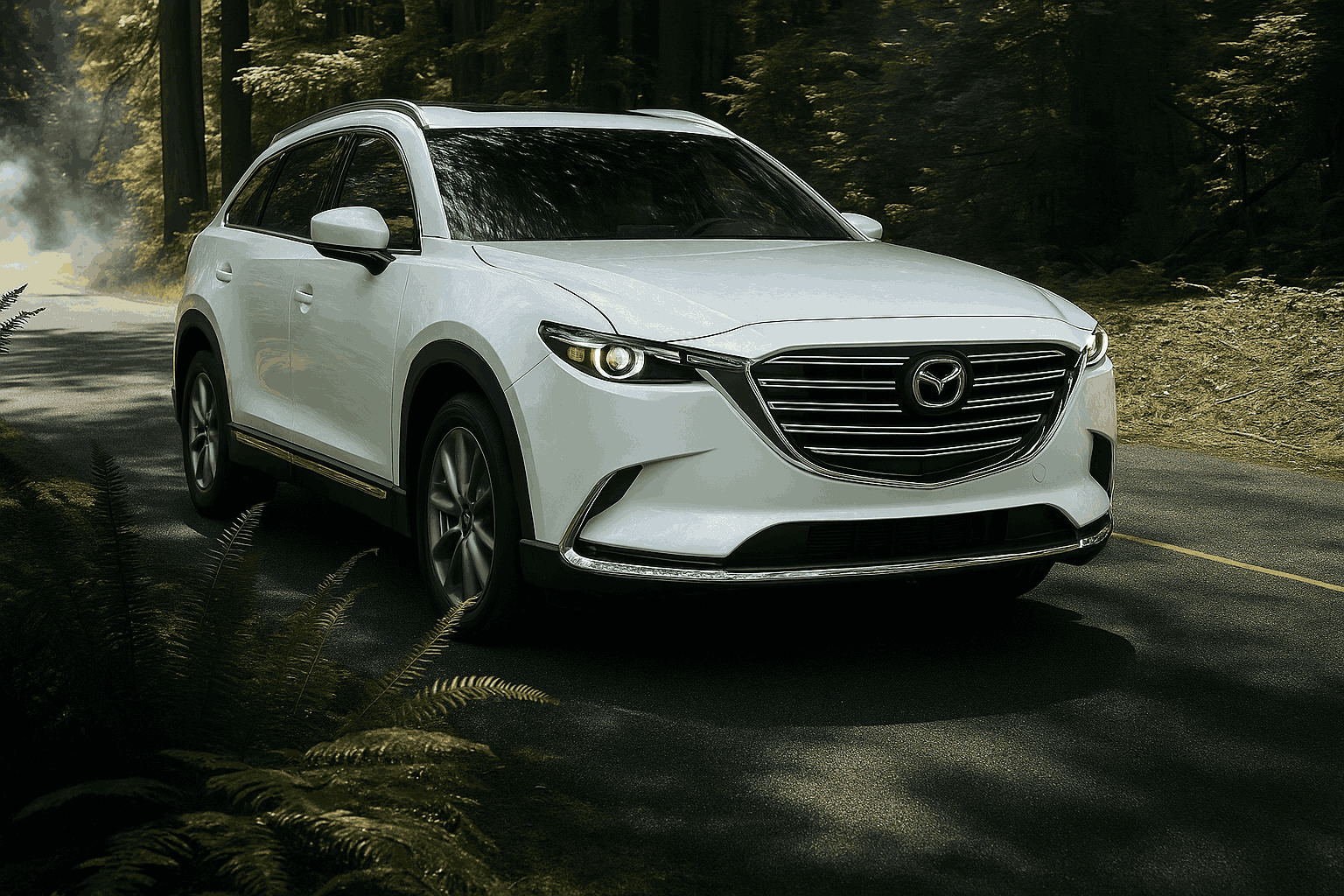
MSRP: $25,400–$34,300
8.3 /10
Rating
Pros
- Feels genuinely fun daily
- Tech finally feels modern
- Hybrid power doesn’t lag
Cons
- No all-wheel option
- Back seat feels tight
Overview
Surprising, really. After years of mild buzz, this Civic-based hybrid finally lands with the kind of styling tweaks and real-world performance that make it more than just a fuel miser. The Hybrid Sport Touring trim adds just enough polish, while its gas mileage—a solid 49 mpg combined—keeps your wallet in check. It’s still a compact sedan, but now with usable power, confident agile handling, and better infotainment features than you might expect at this price. Compared to something like the Toyota Corolla Cross Hybrid or Hyundai Elantra N Line, there’s more driving fun baked in, especially with the punchy 2.0-liter four-cylinder and those twin electric motors doing their thing. Interior space works for everyday life, with legit cargo space and enough in-car tech to avoid feeling stripped. It’s not flashy, but it’s definitely more economical and practical than the older Insight sedan or even the nonhybrid models. This thing earns its spot on the Editors’ Choice list, and that fuel efficiency isn’t just a spec sheet win—it’s noticeable every day. It even makes a strong case when viewed alongside the Honda Civic Si.
What’s New in 2025?
Fresh tweaks. The 2025 update focuses on subtle improvements, not sweeping changes. The updated exterior styling includes a cleaner front bumper, a sharper updated grille, and revised headlamps that give the car a more polished look without overdoing it. These cosmetic changes bring the front-end styling in line with current trends while keeping things familiar.
One key shift: the hybrid powertrain now plays a bigger role. It’s no longer a side offering—it’s baked into the Civic lineup. The new Sport trim level for the Civic hatchback hybrid joins the mix, positioned below the Sport Touring trim level, with the usual black plastic accents giving it that low-key aggressive edge.
Also new is the Google-based infotainment system, now integrated across more trims. It’s quicker, cleaner, and just makes everyday use smoother. If you’re used to the clunky setups from past years, this is a welcome fix—similar to what we’ve seen in the Hyundai Ioniq 6 and the Camry Hybrid. These upgrades follow a trend of smarter systems seen in rivals like the Lexus RZ 450e and the Lexus UX 300h.

Competitors to Consider
Options matter. If you’re browsing small cars with a bit of personality, the Mazda 3 still deserves a look. It’s more fun to drive than most, especially in Mazda3 Turbo form, and offers a surprisingly refined interior. That said, it’s not the most fuel-efficient, especially when compared to the 52 mpg or even 57 mpg figures from some hybrids.
Value shoppers might find the Kia Forte a good pick, thanks to its simpler controls, solid warranty, and lower-end feel that’s more forgivable at its price. If you want something with a bit more visual punch, the Volkswagen Golf GTI still nails the sporty vehicle vibe, though it’s strictly front-wheel drive and not the cheapest choice.
Then there’s the Hyundai Elantra, which offers a roomy interior, decent tech, and quicker performance than expected, especially in the N-Line. The Toyota Corolla leans more comfortable and reliable, with easy controls but less room overall. For something with a bit more cargo practicality, the Kia Niro—a tall hatchback—mixes decent performance and maximum mileage, though the drive feels less sporty.
Need AWD? Look at the Prius with all-wheel drive and solid mixed driving economy. Just don’t expect thrills. For sheer cargo room and interior room, it’s tough to beat the Honda and Toyota crowd in the compact class, but rivals like the Type R or Si—while more powerful—skew toward high-performance versions and don’t always hit the same good value target.
Pricing, Trim Levels, and Best Choice
Surprising. That’s how it feels when you realize the cheapest Civic—the LX sedan—still starts at $24,250, yet includes basics like variable intermittent windshield wipers and a decent infotainment touchscreen. Not flashy, but functional.
Climb up to the Civic Sport Hybrid at $28,750, and you get more than just the hybrid powertrain. Features like heated front seats, a power driver’s seat, and a wireless smartphone charger make daily use feel a lot nicer. Our test vehicle, the Sport Hybrid Touring, pushes the number to $32,950, but it’s loaded: leather upholstery, sunroof, and a punchy 12-speaker stereo come standard.
The next-up sedan jumps to $29,950, and the five-door hatchback—with more room and flexibility—sits closer to $31,750, depending on options. The base-model hatchback keeps things simpler, but most buyers will probably lean toward the Honda Civic Sport or a Civic Hybrid trim level with the upgraded powertrain.
If you’re comparing, options like the Toyota Camry TRD, Hyundai Veloster N, or even the Volkswagen ID.4 Pro S might also be on your radar depending on your performance and pricing preferences. Real bonus? A current $2,500 savings on select trims makes some of these choices easier to justify—especially if you’re not chasing the top spec.
Powertrain, Transmission, and Driving Dynamics
Quiet power. That’s what you notice first. The Civic Hybrid pairs a 2.0-liter four-cylinder with two electric motors, pushing out a combined 200 horsepower and a solid 232 lb-ft of torque. It’s not a performance model, but in urban traffic and routine driving, it’s surprisingly quick and smooth. Tap the throttle, and it’ll zip forward with an effortless feel that even the Accord Hybrid doesn’t always match.
The continuously variable automatic transmission avoids the usual labored drone, letting the gas engine kick in with a quiet growl instead of a wheeze. The transition from electric to gas is nearly seamless. That matters in a mainstream-brand car—you don’t want to feel like you’re trading efficiency for comfort.
During our test drive, the composed suspension felt just right—firm enough for nimble handling, soft enough for an upscale ride. It won’t corner like the Sporty Si or high-performance Type R, but it never felt out of its depth on a winding back road. You also get a driver-selectable regenerative braking system that makes one-pedal driving possible, even if it takes a little practice.
If you’re used to a nonhybrid Civic, the jump here is real. The added torque—especially compared to the base engine in the base gas-only Civic—means quicker merges and less effort in daily driving. No all-wheel drive, but the front-wheel-drive layout stays planted and confident, even on wet roads.
Is it as fun as a Civic Si? No. But for a compact family hybrid that’s also enjoyable and well-balanced, it makes the Toyota Prius feel a little sterile in comparison. If you’re shopping around, performance-minded options like the GR Supra Manual and Toyota GR86 Review offer different flavors of excitement.
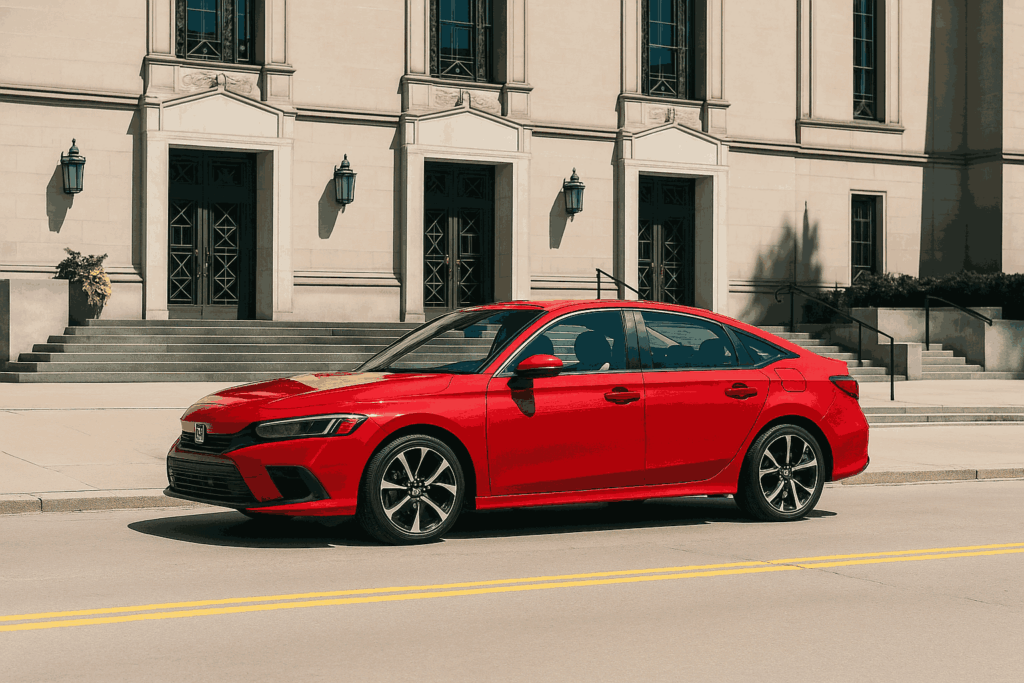
Fuel Efficiency and Real World Testing
Looking at the hybrid setup and weight of the Civic, real-world fuel efficiency should stay strong in most daily driving. In mild weather, especially during steady suburban routes with light traffic, drivers can realistically expect around 50 to 52 mpg city. The hybrid system seems well-optimized for stop-and-go conditions, where it can rely more on the battery and cut down fuel use noticeably.
On highway drives, mileage tends to dip slightly, which is typical for most hybrids. Speeds over 65 mph may bring it down to around 44–47 mpg, depending on wind, terrain, and load. During cold weather, especially below freezing, it’s fair to expect a further drop—likely around 43 to 45 mpg combined, as the system runs more on gasoline to keep things warm and efficient.
Over a full week of mixed driving, including city loops and short highway trips, most owners should see an average of 48 to 49 mpg combined. It won’t always match EPA numbers exactly, but the difference stays small and manageable—especially if your routes include steady city stretches. Other hybrids like the Toyota Prius, Toyota Crown Hybrid Max, or Volvo XC60 Recharge may offer similar or slightly different results based on their size, tuning, and powertrains.

Interior and Comfort
Clever. That’s how the cabin design feels—everything’s where you expect it, and nothing screams for attention. The dashboard is clean, anchored by a neat honeycomb strip that hides the dashboard vents. It’s a subtle touch, but one that gives it a bit of pizzazz without trying too hard. Controls are refreshingly simple—buttons, knobs, and moving parts feel solid, with a level of precision rarely found in an economy car.
The touchscreen responds quickly and is well within reach, and the overall ergonomics make sense right away. No need to fumble or dig through menus. Even the gear selector operates with a smooth, deliberate motion that reminds you of more luxury cars than you’d expect in this class. There are some plastic areas, of course—particularly around the lower console—but nothing that feels flimsy or prone to scratching after normal use.
As for ride quality, it leans toward taut but never harsh. On smooth roads, it’s quiet and composed. On broken roads, the hybrid system’s weight actually helps, giving it a more balanced composure than some gas versions or similarly priced competitors. There’s a touch of road noise, mostly due to the aerodynamic shape, but wind noise stays low thanks to thoughtful sealing and tight build quality. Models like the Acura RDX A-Spec and Toyota Avalon TRD take a more premium approach to comfort, but the Civic holds its own well in the segment.
Inside, the Civic Hybrid feels more roomy than it looks from the outside. Front passengers get plenty of legroom and clear outward visibility, helped by thin front roof pillars and well-placed side view mirrors. The rear shoulder room and backseat space are decent for the class, though the sloping roof cuts a bit into headroom. The back window is on the smaller side too, but the standard rearview camera makes up for it when backing out.
The seating position sits lower than a crossover, but entry and exit are still easy. No commanding view, but enough height for a good view of the road. A height-adjustable passenger seat would’ve been nice, especially on the top trim level, but it’s not a dealbreaker. Compared to a Toyota Prius, it feels more sporty, more grounded—less floaty and more connected. Even in comparison to the Honda Odyssey, Mazda3 Hatchback, or other daily-driver favorites, the Civic strikes a well-balanced blend of function and form.

Cargo & Practicality
That’s the word that fits the Civic Hybrid hatchback when it comes to storage. It doesn’t scream cargo champ, but it handles everyday cargo hauling better than most compact sedans—especially when you fold the seats. With about 25 cubic feet behind the rear seats, it beats out rivals like the Hyundai Elantra and even some subcompact crossovers in raw floor space.
Loading bigger items is easy thanks to the deep cargo hold and wide opening at the side of the car. The seats don’t fold flat, but they go low enough to handle longer items without a fuss. You also get a removable tray under the floor for hiding smaller things, and the retractable cargo cover adds some privacy. It’s no 50 cubic feet hauler like a crossover SUV, but for a compact, it offers good flexibility—though larger vehicles like the Hyundai Palisade, Honda Pilot TrailSport, or Toyota RAV4 Hybrid naturally offer more room for family hauls or road trips.
In the test vehicle, we packed luggage, groceries, and even a flat-pack shelf—all fit with room to spare. Compared to something like the Toyota Corolla or Honda HR-V, this feels more roomy from the trunk to the rear seat. Only drawback? Some small-item storage up front is tight, especially near the armrest. Still, as economy car practicality goes, this hybrid nails the basics while keeping things clean and usable.
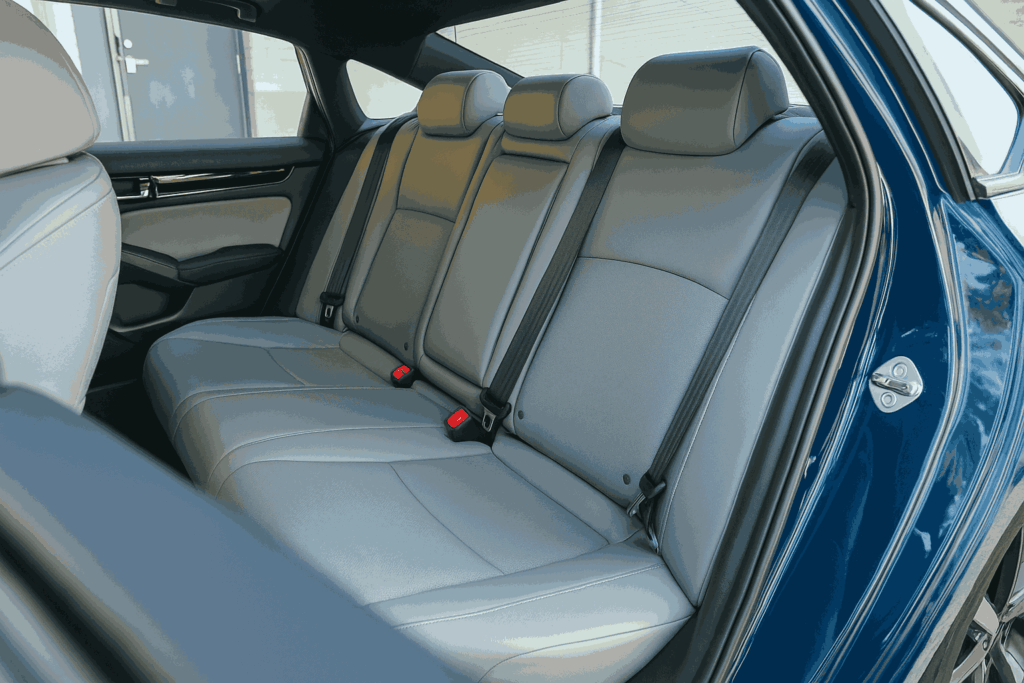
Tech & Connectivity
That’s how the tech feels here—nothing overcomplicated, just tools that work when you need them. The 9-inch touchscreen (or 7.0-inch touchscreen infotainment display on lower trim levels) is sharp, responsive, and surprisingly easy to use, with a logical menu structure that doesn’t bury simple things like maps or audio. Both Apple CarPlay and Android Auto come standard, and yes, there’s wireless connectivity, so no cords cluttering the console.
Higher trims step it up with Google built-in, which brings handy features like Google Assistant, in-dash navigation, and a clean software suite that feels modern without being flashy. The 10.2-inch digital gauge display adds clarity without information overload. Our test car’s 12-speaker Bose stereo system brought a bit of life to podcasts and music—it’s optional, but worth it if you care about sound.
Extras like the wireless smartphone charging pad, adaptive cruise control, and other driver assistance technologies round out the experience, working quietly in the background. Voice commands aren’t perfect, but they handle basic requests fine. Compared to some Toyota systems or even setups in vehicles like the VW Tiguan, this setup feels more straightforward and polished—especially when accelerating or braking and you don’t want to fumble with screens.

Safety
Reassuring. That’s the feeling you get when the safety features work quietly in the background, not trying to impress but doing their job well. The Pre-collision safety system reacts smoothly—not jumpy or overly sensitive—and the Lane Departure Warning gives a gentle nudge rather than a scare. Both systems felt well-tuned during daily use.
Blind Spot Monitoring and the Back-up camera come in handy in tight parking lots, especially with limited rear visibility. It’s nice that they respond quickly without lag, and the display is clear even in low light. The Tire Pressure Warning also popped up once during our drive—accurate and timely, not random like some systems we’ve seen.
You also get Stability Control, which quietly keeps things tidy in sharp turns or on slick roads. The Post-collision safety system and built-in alarm round things out. Altogether, it’s a solid suite that doesn’t try to overdo it—just works as it should. For those comparing safety-focused family vehicles, models like the Toyota Grand Highlander, Lexus RX 450h+, or Acura RDX A spec also deliver impressive protection with premium driver assistance systems.
Warranty and Maintenance Plan
That’s the word that best sums up the standard warranty package here. You get a three years, 36,000 miles limited warranty, which aligns with most of the segment—including cars like the Elantra and Kia K4. The powertrain warranty stretches to five years or 60,000 miles, which again is pretty typical for a 2025 Civic-class vehicle.
What helps a bit is the complimentary scheduled maintenance plan, which covers two-year, 24,000-mile service. It’s not much, but at least it reduces some early ownership costs. Buyers also get an extra sense of confidence with hybrid components covered for eight years or 100,000 miles, which is now a must for any hybrid setup. This level of support feels comparable to what’s offered in the Hyundai Tucson, especially when evaluating long-term value.
The 12,000-mile, one-year service promise is more of a carryover from the previous model year, and overall, the coverage here feels fair—but not standout. Honda does well to offer comprehensive coverage, but it’s clearly more about checking boxes than surprising you with extras, much like the Toyota Venza tends to conclude for its segment.
Vyocar Bottom line
The 2025 Civic Hybrid finally feels complete—with strong fuel efficiency, everyday usability, and enough tech to make it feel current without trying too hard. It’s still a compact car, but the ride, handling, and practicality edge out most direct rivals, making it feel more refined than you’d expect. While not groundbreaking, the updates and hybrid focus make it a smart, well-rounded choice that delivers where it matters most.

